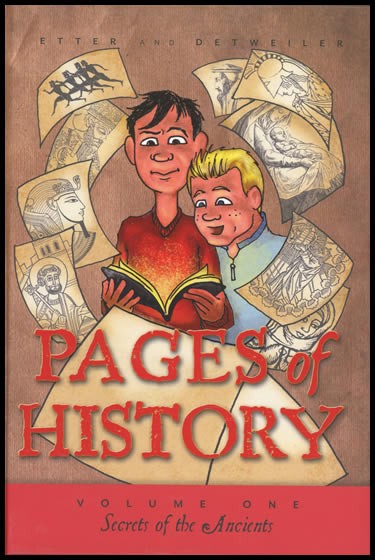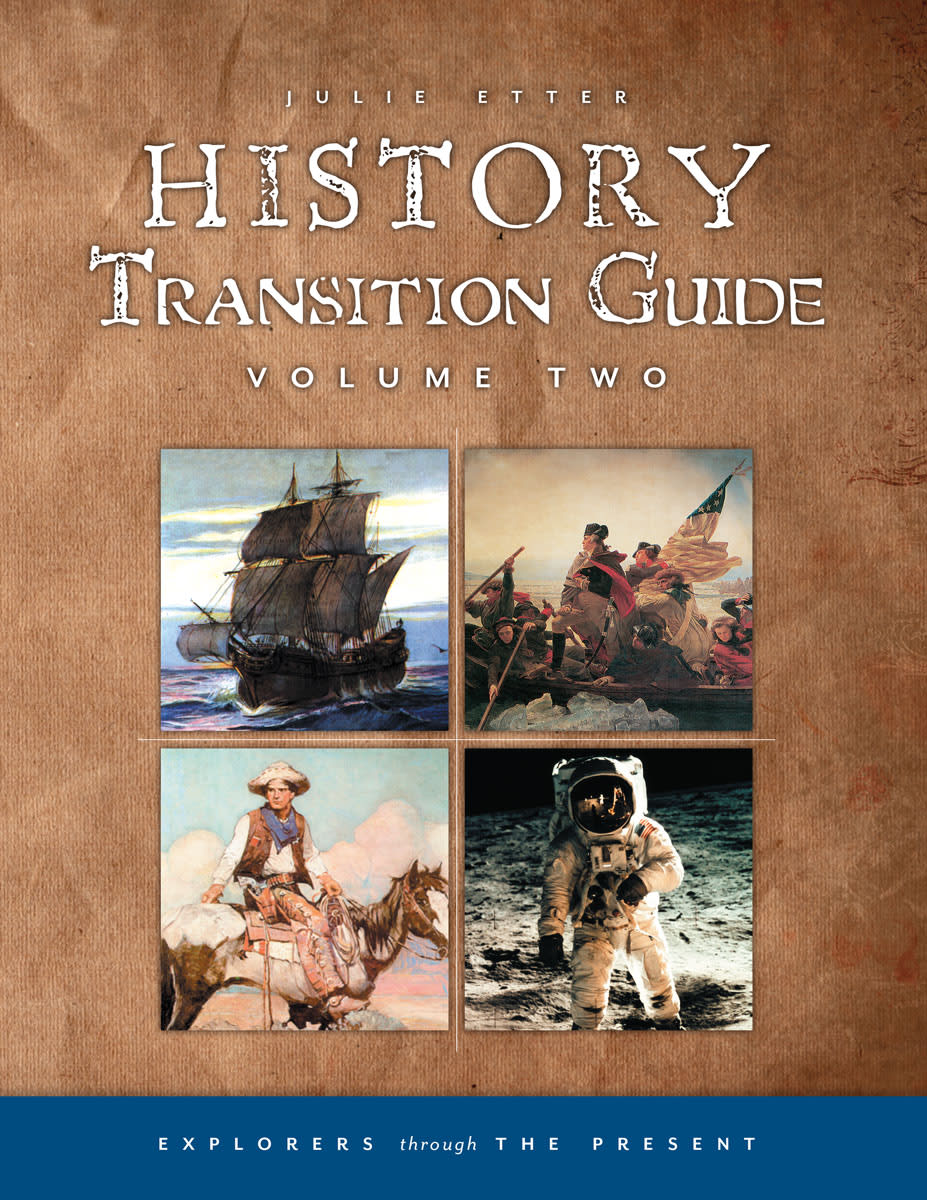Pages of History: Volume One, Secrets of the Ancients and Volume Two, Blazing New Trails are hardcover books that use a time-travel story approach to cover world history. The books function like chapter books because of the underlying story of time travelers James and Lance and the predicaments in which they find themselves. Our heroes are joined by talking birds and cats and other odd characters. These “unhistorical” characters plus the time travel device make for lively story telling rather than dry history. Both books are well written and should make great read-aloud stories for the family while they also teach a great deal of history.
The colorful covers on the hardcover editions and occasional black-and-white illustrations add visual interest, while the relatively large font and layout of the text itself makes it easy on the eyes. Children about fourth grade and up should be able to read the books themselves.
The first book covers from Creation through the Reformation in its 444 pages while the second book picks up later in the Reformation and continues up to the present in 331 pages. These books are not intended to provide comprehensive coverage for all of world history; think of them as a Protestant presentation of the history of western civilization.
Each Pages of History volume has a companion Transition Guide written by Julie Etter. While Pages of History books can be used on their own, the Transitions Guides turn them into complete courses. Transition Guides are available in either print or ebook editions. The first Transition Guide has 19 lessons while the second has 13. Each lesson has plans for five days or “sessions” per week.
The Transition Guides incorporate the Veritas flashcards plus additional books. Volume One correlates with the first three sets of Veritas flashcards while the second volume coordinates with the last two sets of Veritas flashcards. Volume One also uses the supplemental books Adam and His Kin, God King, The Children's Homer, The Boy's and Girl's Herodotus, Beowulf, and King Arthur and His Knights. Volume Two uses Alone Yet Not Alone, Augustine: The Farmer Boy, Children of the Covered Wagon, First Voyage to America, The Hiding Place, Johnny Tremain, Of Plymouth Plantation, Sergeant York and the Great War, and With Lee in Virginia. Technically you can cover both books in one school year (32 weeks), but it might be difficult to work through all of these books and accomplish the other lesson activities in one year. So you might consider completing only one volume per year. Note that Veritas' history courses that spread Pages of History over five years cover only the period of history encompassed in one set of flashcards per year, but they add many more supplemental resources each year.
The five Transition Guide “sessions” for each lesson follow a similar pattern each week, but with a few variations. The first session assigns a chapter of Pages of History to be read and provides a series of discussion questions for the chapter. The discussion questions are labeled for use in the various sessions through the week rather than all at once. The first session also has comprehension questions for the chapter. For the second session, the focus is on the pertinent flashcards. You will read the information on the cards then have students answer comprehension questions based on the flashcards. In the second session, you will also read from the supplemental books and discuss a short series of questions. The third session begins with a project that might be something like memorization, composition, creating a presentation, or giving an oral presentation. The third session sometimes also includes additional reading and, sometimes, discussion questions. During the fourth session, you will work again with flashcards and do additional reading and questions from supplemental books. The fifth session has an optional project. This might be filling in the blanks, completing a chronology, a hands-on activity (e.g., making invisible ink), recreating the menu for an authentic Thanksgiving meal, creative writing, art appreciation activity, taking an exam, or other activity. There is a mid-term exam after lesson 15 in the first guide and a final exam at the end of the second guide, reflecting use of both guides for one school year.
You will need to decide which of the activities to use with your children. Some will be too challenging for young children. You might have older students write out answers to some questions while allowing younger children to do give an oral response. Use your own judgment for both pacing the course and using activities.
While Veritas suggests Pages of History books for students as young as second grade and up through sixth grade, Transition Guide lessons seem most appropriate for students at least fourth grade and above.
The Protestant viewpoint in Pages of History is very obvious and intentional. It dominates the last section of Volume One and the first part of Volume Two, much as you would expect since this is the period of the Reformation and its aftermath. That makes them a good fit for those who want to teach from a Protestant perspective, but not for others.
Pages of History volumes have to be one of the most enjoyable ways of learning history. The Transition Guides expand and reinforce students' knowledge of key historical events while also enhancing the study with good literature. All of this makes for an excellent foundation in world history for students in the elementary grades.













